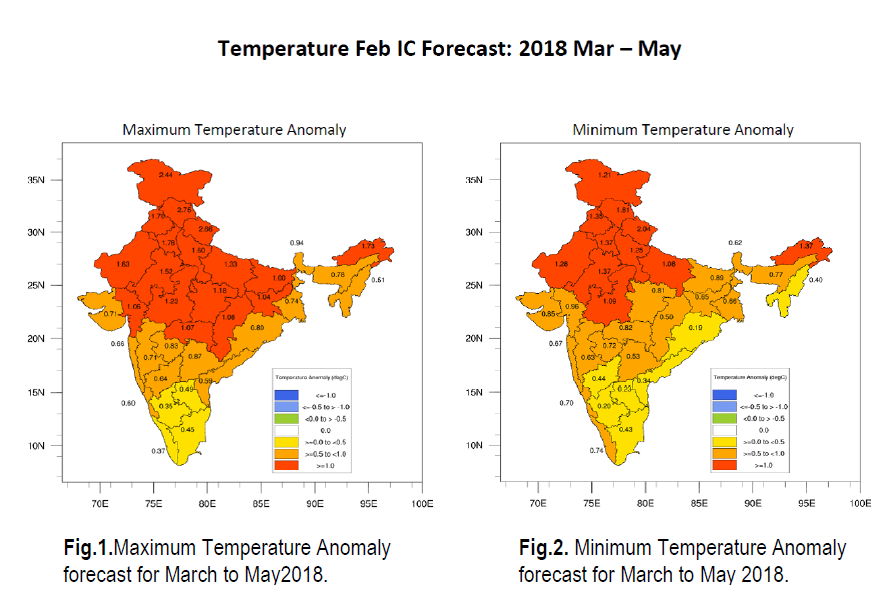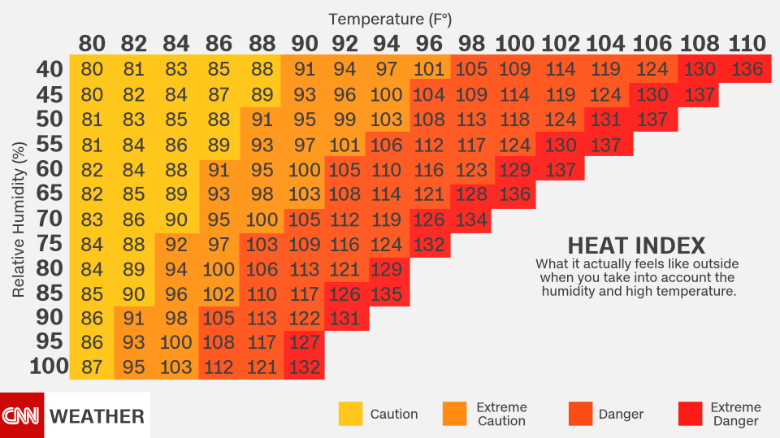Nutritional Concepts to Manage Heat Stress in Poultry
- R&D
Summer will set in by March in most of the parts of India, and will be soaring high thereafter until the Monsoons. Year on year, there has always been an upward trend for the average temperature conditions during summer. As seen in Fig.1, for 2018, most parts of India, experienced the heat wave and forecasted for higher temperatures than reference value, and this condition further deteriorated in 2019 with Rajasthan peaking at 50.80C.
Fig. 1: Temperature Anomaly Forecast 2018

Source: Indian Meteorological Department (2018)
It becomes difficult for all living beings to cope up with these hot weather conditions. The real culprit is the humidity which when coupled with high temperatures aggravates the situation. This is experienced in coastal regions of India, wherein the effective temperature, due to high humidity would be much more than the measured/recorded temperature, as depicted in Fig. 2.
Fig. 2: Temperature humidity index chart

It becomes highly challenging for a poultry producer to rear birds, during these hot weather conditions, and various nutritional and managemental modifications are adopted by them to overcome these challenges.
Nutritional concept to manage heat stress in poultry:
Poultry been homoeothermic starts experiencing heat stress, when the external environmental temperatures exceed 300C, and shows behavioral signs like panting, seeking shade, spreading of wings etc., to handle the stress. There are various nutritional modifications that are carried out in the diet like changes in crude protein, AME, crude fat and digestible amino acid levels. Along with this, few supplements like Vitamin E, C, Se, chromium and electrolytes, are topped up (to the existing levels) to manage the biological oxidative stress that arises out of higher temperatures. The below mentioned additives, can be of great help, owing to their mechanisms to modulate the physiological changes that take place during heat stress conditions.
Betaine:
Osmoregulation is the ability of a cell to maintain its structure and function by regulating the movement of water in and out of the cell, and is an energy consuming process. During heat stress conditions, the osmolarity of a cell is affected, when there is excessive loss of water and electrolytes from a birds’ body. This leads to loss of cell integrity and thereby the function, causing poor growth performance in poultry. Under these circumstances, supplementation of Betaine through feed and/or water has proven to be beneficial. Betaine been an organic osmolyte helps to maintain the cellular osmolarity and reduces the energy expenditure of the hen. Several trials conducted with Betaine in heat stress conditions, have shown beneficial effects of its addition. Other than osmoregulation, betaine is also a well-established methyl donator.
Polyphenols:
These are naturally occurring phenolic compounds present in almost of the plants and are known to possess potent biological anti-oxidant function, due to the presence of more number of hydroxyl groups. During heat stress, there is more generation of free radicals, that damage the cells, affecting metabolic reactions of the cell. Supplementation of polyphenols in this situation, helps in scavenging the free radicals and reduces the chain effect of cellular oxidation. Polyphenols are better anti-oxidants than Vitamin E & vitamin C and helps in regenerating the oxidized vitamin E (Bouwstra and Nwose, 2008) as well. Said that, there are certain components of polyphenols, that can cause negative effects in poultry. Therefore, it is critical to place emphasis on selection of the type of plant, the type of polyphenol component to be extracted, standardization of the procedure, thermostability of the component, etc., so as to produce a consistent quality product.
Gut health promoting concepts:
Physiological effects of heat stress like production of free radicals, respiratory alkalosis etc. take a toll on the gut health of poultry. Tight junction integrity is compromised during heat stress, leading to leaky gut, which consequently affects the nutrient absorption, and thereby overall bird performance. Dysbacteriosis commonly develops during these conditions, leading to reduction in the beneficial bacterial population and this coupled with reduced immunity, makes the bird succumb to various infection. Inclusion of select combination of short and medium chain fatty acids, in this scenario, helps to take care of the above-mentioned ill effects, owing to their pH reducing, broad-spectrum anti-microbial and nutrient sparing mechanisms of action.
The underground water table reduces in summer, affecting the quantity and quality of water that is offered to poultry. Many a times, it becomes necessary for the poultry producers to purchase water from external vendors, which is again a threat to its quality. Addition of water cum gut acidifiers in water helps to manage this challenge and ensures improvement in water quality, when used efficiently at appropriate doses.
Immuno-boosters and anti-pyretic compounds can be added as well during heat stress to enhance suppressed immunity and relieve stress respectively.
Conclusion:
Heat stress is an inevitable challenge in India and can be taken care of when adequate managemental and nutritional changes are adopted. There should be judicious usage of feed additives and supplements. Future target needs to be placed on producing genetic strains that are intrinsically resistant/tolerant to high temperature conditions, without affecting the growth and productive performance of birds. Research in the areas of early life conditioning of birds like pre-natal acclimatization to heat, would also enable the birds to handle heat stress effectively.